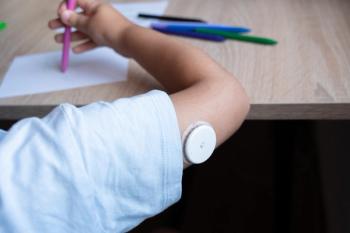
- September 2023
- Volume 40
- Issue 8
How to prevent contagious respiratory infections
A refresher on best interventions for common respiratory disorders in children.
Most respiratory infections present with minor or mild symptoms of the common cold. However, some viruses, such as respiratory syncytial virus (RSV), can cause significant morbidity and mortality, particularly in infants.1 Throughout the United States, respiratory illnesses are a leading cause of hospital admissions in children. It is of utmost importance to discuss prevention strategies with parents and caregivers to mitigate the spread of these infections.
Immunizations
A major strategy in preventing severe infection from respiratory illnesses is immunization, specifically against influenza, COVID-19, and most recently, RSV. In July 2023, the FDA approved the use of nirsevimab (Beyfortus), a monoclonal antibody, which protects against RSV lower respiratory tract infections.2 This vaccine is available to all children up to aged 24 months and administered as a single dose.3 This is a significant alternative to palivizumab (Synagis), another monoclonal antibody against RSV, that is administered monthly during RSV season and is available only to children deemed high risk.4 In addition, the FDA is investigating the safety profile of an RSV vaccine that could be available to pregnant women during the second and third trimesters. This vaccine will enable mothers to create antibodies against RSV that they then pass along to the fetus via the placenta,5 providing protection against RSV to infants after they are born.
Similar to RSV, the influenza virus often causes symptoms of the common cold. However, children younger than 5 years and those with chronic health conditions are at especially high risk for developing complications of the flu, such as pneumonia, encephalopathy, and even death. Each year, millions of children get the flu and thousands are hospitalized with complications of the virus. From 2004 to 2020, there were at least 199 reported deaths in children per year due to the flu. Because of underreporting, the number is actually estimated to be as high as 434 deaths per year. Notably, among children that died because pf flu-related complications, 80% of the children were not fully vaccinated against influenza.6 A study in 2022 showed that in children, the flu vaccine decreased the risk of developing life-threatening complications by 75%.7
Annual vaccination against the flu is the best protection against development of serious complications of the virus. It is particularly important that children who are at higher risk of developing complications from the flu get vaccinated. This includes children with asthma, cystic fibrosis, chronic lung disease, cerebral palsy, epilepsy, developmental delay, spinal cord injury, muscular dystrophy, congenital heart disease, sickle cell disease, diabetes, kidney or liver disorders, immunocompromised children with HIV/AIDS or cancer, or obesity. Additionally, vaccinating pregnant women during any trimester of pregnancy helps protect their babies during the first several months of life when they are too young to get vaccinated.
During the 2021-2022 flu season, 65% of children who were hospitalized with the flu had at least one preexisting chronic health condition (eg, asthma, obesity). The flu vaccine decreases the risk of developing severe respiratory infections due to the influenza virus by 40% to 60%8 and has been shown to decrease missed school days, flu-related hospitalizations, and death related to the flu. Unfortunately, during the 2022-2023 flu season, only 64% of children aged 6 months to 4 years old were vaccinated, 56% of children aged 5 to 12 years were vaccinated, and 47% of children aged 13 to 17 years were vaccinated.9
Each season, the flu vaccine is quadrivalent (protects against 4 different flu viruses) and is updated to protect people against the 4 influenza strains that are predicted to be the most common during the upcoming flu season. There are 2 flu vaccine formulations available: injection or nasal spray. The influenza vaccine (injection) is approved for anyone 6 months and older and the nasal spray is approved for children 2 years and older. In general, children 6 months and older are eligible to get the flu vaccine every year and it is ideal to get it in September and October. Summer visits at the pediatrician’s office are a good time to start discussing with children and their parents the annual flu vaccine and to schedule an appointment to receive it during the upcoming months.
Many studies have looked at the safety of influenza vaccines in children and have shown very good safety profiles and few adverse effects. One such study showed that some common reactions (local and systemic) to the flu vaccine were pain, redness, and tenderness at the injection site, and irritability, fatigue/malaise, headache, and/or myalgias systemically.10 In the US, 1 study showed that 1 in 5 children have a parent who reports vaccine hesitancy (“mental state of holding back in doubt or indecision regarding vaccination”), which leads to 26% fewer vaccines administered against influenza in children.11 Therefore, as providers, it is of utmost importance to inform, counsel, and educate parents and caregivers about the benefits of vaccination.
Face masks
Wearing face masks is well known to reduce the transmission of respiratory infections and is an important public health measure. School districts vary on face mask policies. If a child chooses to wear a face mask in school, it is important to choose one that fits well and is comfortable. Pediatricians may wish to recommend that children be sent to school with an extra mask each day and to label the child’s mask.12
A recent poll of over 475 parents of school-age children found that nearly half of parents felt that having their children wear masks in school negatively impacted their child’s education, social interactions, and mental and emotional health.13 While it may take several years of data to see the full consequences and effects of mask-wearing on language development, early data thus far suggest that masking does not significantly impact social or speech skills.14
Pediatricians should remind families that proper handling of masks is important. When a child touches a contaminated mask on the face with his hands, he contaminates not only the hands, but whatever else his hands then touch. Oftentimes, masks are improperly fitted to children’s faces and slide down below the nose, leading children to touch the mask to readjust its position, thereby contaminating their hands, which become vectors for viral spread.
Hand hygiene
Next, consider the role of proper hand hygiene as another key public health measure in reducing the spread of severe respiratory infections. Good hand hygiene is strongly advocated by the World Health Organization. A recent meta-analysis looking at hand-hygiene frequency in decreasing spread of respiratory infections estimated that even 1 episode of hand washing can reduce the daily probability of acquiring an acute respiratory infection by 3%.15 This risk can be extrapolated to a 28% reduction in daily risk of infection with 10 episodes of handwashing. The CDC advocates promotion of hand hygiene in schools, as this leads to fewer respiratory illnesses and fewer missed school days. Proper handwashing involves using soap and water for at least 20 seconds or utilizing a hand sanitizer that is alcohol based (with at least 60% ethyl alcohol or 80% isopropyl alcohol) if soap and water are not available.16,17 Using warm water with soap is more effective than cold water, which does not remove microbes and oils as well as warm water.
Unfortunately, according to the CDC, school-age children are not washing their hands enough (or at all, in fact). One study showed that 58% of girls and 48% of boys in middle school and high school washed their hands after using the restroom, and only a fraction of those students used soap.18 This data indicate the importance of repeating hand hygiene lessons throughout school curricula.
Social distancing
Finally, social distancing may play a very important role in reducing severe respiratory infections in children. Results of a recent study showed that social distancing as a result of the COVID-19 pandemic has decreased the number of common childhood infections including otitis media, bronchiolitis, croup, influenza, pneumonia, sinusitis, and streptococcal pharyngitis. These common infections are often spread via respiratory droplets. The biggest decrease was in the rates of diagnoses of influenza, croup, and bronchiolitis infections (99.5%, 96.5%, and 92.9% respectively) per 100,000 children.19 These data show the substantial impact social distancing can have on preventing the spread of infection.
Summary
In summary, pediatricians, as trusted health care advisers, have a unique opportunity and responsibility to educate children and families on best practices for staying healthy. Vaccination, proper hand hygiene, mask wearing, and social distancing are just a few examples of measures that can be taken to prevent serious respiratory illnesses. It may be unrealistic to think that children, families, and schools will accept masking and social distancing at this time. Thus, immunizations and handwashing become even more important to prevent serious infections. Pediatricians can hopefully influence families to adopt these measures as we head into the season of respiratory illnesses.
References:
1. Respiratory syncytial virus infection (RSV). Centers for Disease Control and Prevention. Reviewed October 28, 2022. Accessed August 1, 2023. https://www.cdc.gov/rsv/index.html
2. FDA approves new drug to prevent RSV in babies and toddlers. News release. FDA. July 17, 2023. Accessed August 1, 2023. https://www.fda.gov/news-events/press-announcements/fda-approves-new-drug-prevent-rsv-babies-and-toddlers
3. FDA approves Beyfortus (nirsevimab-alip) to protect infants against RSV disease. News release. Sanofi. July 17, 2023. Accessed August 1, 2023.
4. Synagis—over 25 years of real-world evidence. Accessed August 1, 2023. https://synagishcp.com/index.html
5. Wadman M. FDA advisers agree maternal RSV vaccine protects infants, but are divided on its safety. Science. May 19, 2023. Accessed August 1, 2023. https://www.science.org/content/article/fda-advisers-agree-maternal-rsv-vaccine-protects-infants-divided-safety
6. Flu vaccines are important for children. Centers for Disease Control and Prevention. Reviewed November 30, 2022. Accessed August 1, 2023. https://www.cdc.gov/flu/highrisk/children.htm
7. Olson SM, Newhams MM, Halasa NB, et al. Vaccine effectiveness against life-threatening influenza illness in US children. Clin Infect Dis. 2022;75(2):230-238. doi:10.1093/cid/ciab931
8. Vaccine effectiveness: how well do flu vaccines work? Centers for Disease Control and Prevention. Reviewed February 8, 2023. Accessed August 1, 2023.https://www.cdc.gov/flu/vaccines-work/vaccineeffect.htm#:~:text=While%20vaccine%20effectiveness%20(VE)%20can,used%20to%20make%20flu%20vaccines
9. Influenza vaccination coverage, children 6 months through 17 years, United States. Centers for Disease Control and Prevention. Reviewed April 28, 2023. Accessed August 1, 2023. https://www.cdc.gov/flu/fluvaxview/dashboard/vaccination-coverage-race.html
10. Trombetta CM, Gianchecchi E, Montomoli E. Influenza vaccines: evaluation of the safety profile. Hum Vaccin Immunother. 2018;14(3):657-670. doi:10.1080/21645515.2017.1423153
11. Santibanez TA, Nguyen KH, Greby SM, et al. Parental vaccine hesitancy and childhood influenza Vaccination. Pediatrics. 2020;146(6):e2020007609. doi:10.1542/peds.2020-007609
12. Mayo clinic staff. Safety tips for attending school during COVID-19. Mayo Clinic. August 23, 2022. Accessed August 1, 2023. https://www.mayoclinic.org/diseases-conditions/coronavirus/in-depth/returning-safely-to-school-covid-19/art-20490441
13. Goldberg D. Politico-Harvard poll: 40 percent of parents believe masks at school harmed their kids. Politico. March 25, 2022. Accessed August 1, 2023. https://www.politico.com/news/2022/03/25/parents-masks-harm-kids-poll-00020250
14. Hamilton J. Do masks in school affect kids speech and social skills? NPR. March 15, 2022. Accessed August 7, 2023.
https://www.npr.org/sections/health-shots/2022/03/15/1086537324/schools-masks-kids-learning-speech-development#:~:text=Early%20research%3A%20Masks%20in%20school,%3A%20Shots%20%2D%20Health%20News%20%3A%20NPR&text=Newsletters-,Early%20research%3A%20Masks%20in%20school%20largely%20have%20no%20significant%20effect,obstacle%20to%20learning%20or%20socializing.
15. Mo Y, Pham TN, Lim C, et al. The effect of hand hygiene frequency on reducing acute respiratory infections in the community: a meta-analysis. Epidemiol Infect. 2022;150:e79. doi:10.1017/S0950268822000516
16. Hand hygiene in schools and early care and education settings. Centers for Disease Control and Prevention. Reviewed June 22, 2023. Accessed August 1, 2023. https://www.cdc.gov/handwashing/handwashing-school.html
17. Yeomans D, Kaye A. Is your school’s hand sanitizer safe? Is it being used?Gojo blog. June 1, 2021. Accessed August 1, 2021. https://www.gojo.com/en/Newsroom/Blog/2021/Is-Your-Schools-Hand-Sanitizer-Safe-Is-It-Being-Used#
18. Hand hygiene facts and statistics. Healthy Schools, Healthy People. Accessed August 1, 2023. https://www.healthyschoolshealthypeople.org/community/hand-hygiene-facts-and-statistics
19. McBride DL. Social distancing for COVID-19 decreased infectious diseases in children. J Pediatr Nurs. 2021;58:100-101. doi:10.1016/j.pedn.2021.02.018
Articles in this issue
about 2 years ago
Using ChatGPT in health care is concerningabout 2 years ago
Alopecia in adolescentsabout 2 years ago
Mobile mental health apps: Should we recommend them?about 2 years ago
Pediatric T1D management adherence system evaluated in studyabout 2 years ago
Using artificial intelligence in day-to-day practiceNewsletter
Access practical, evidence-based guidance to support better care for our youngest patients. Join our email list for the latest clinical updates.














